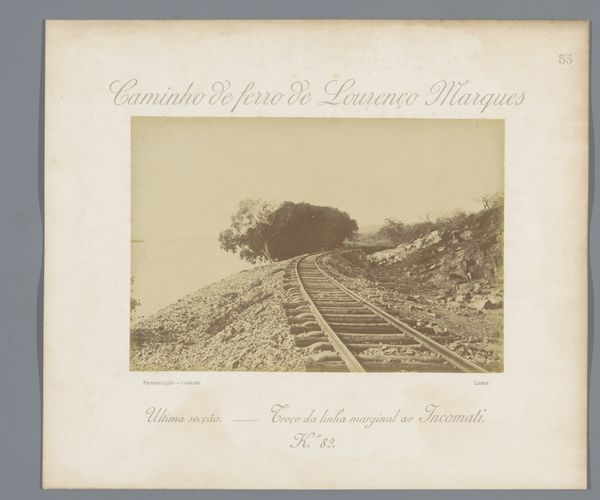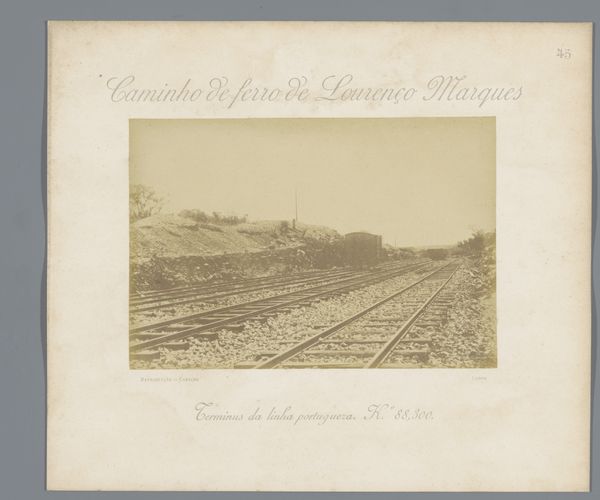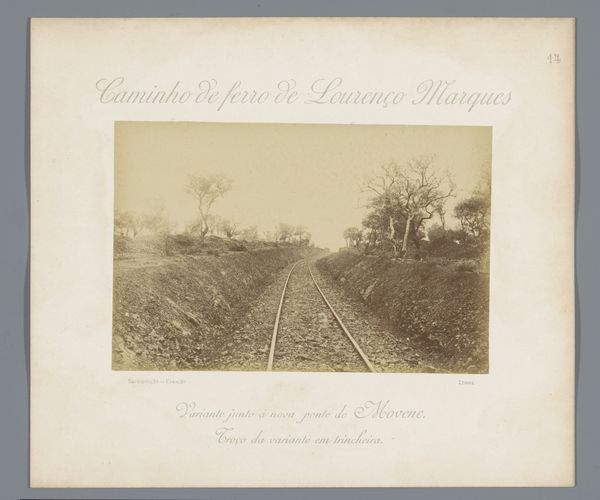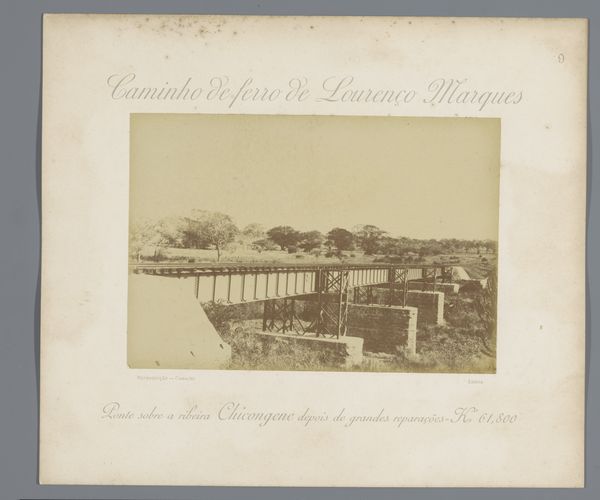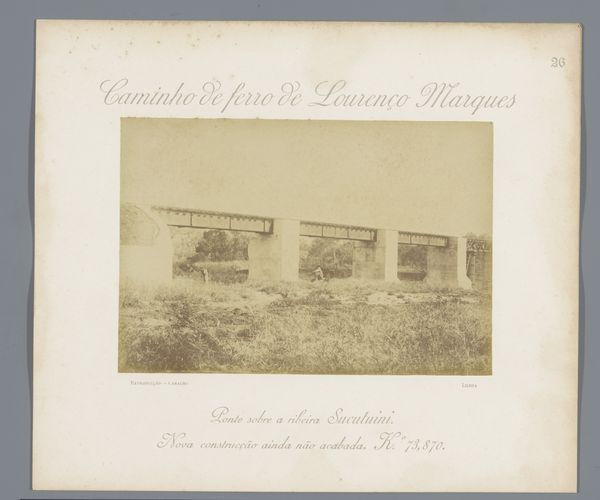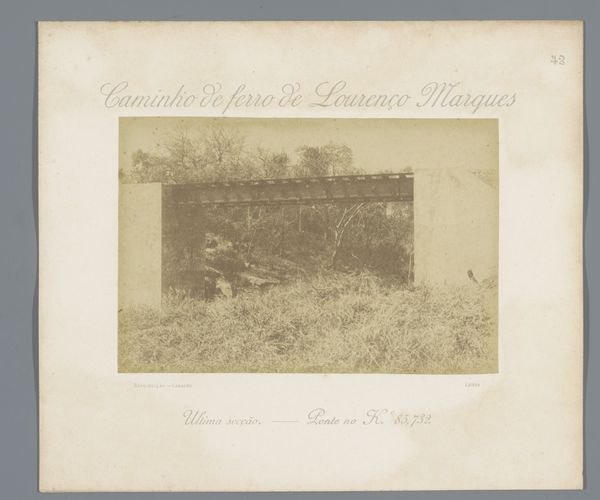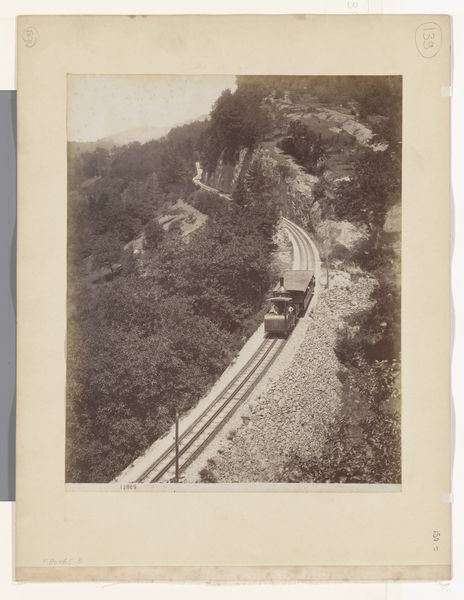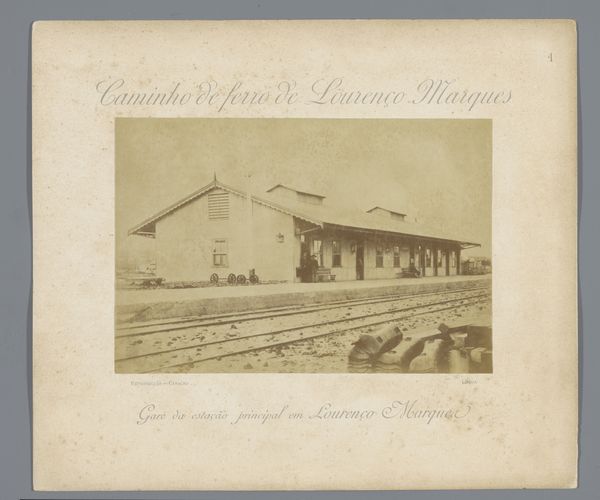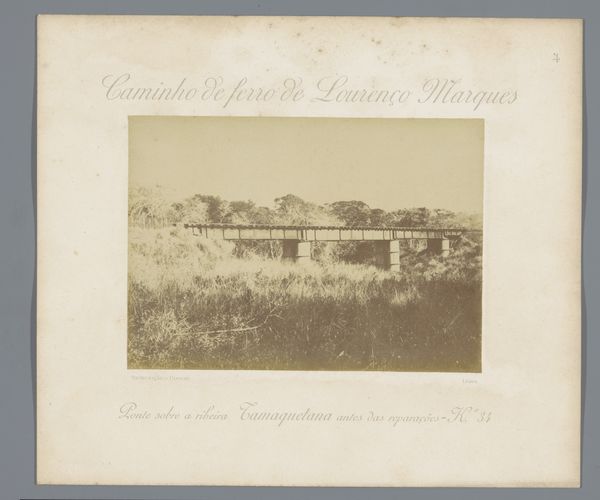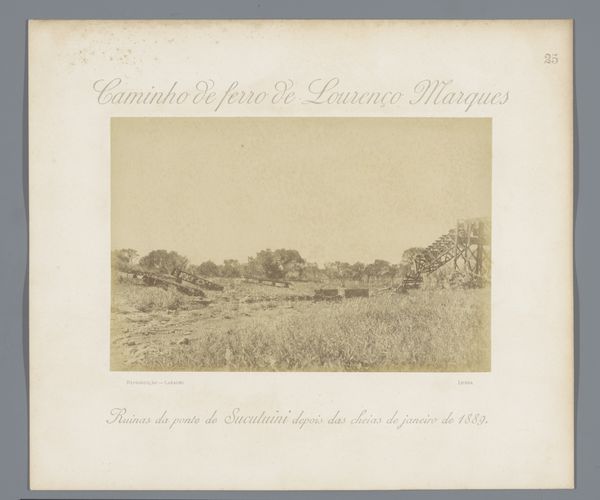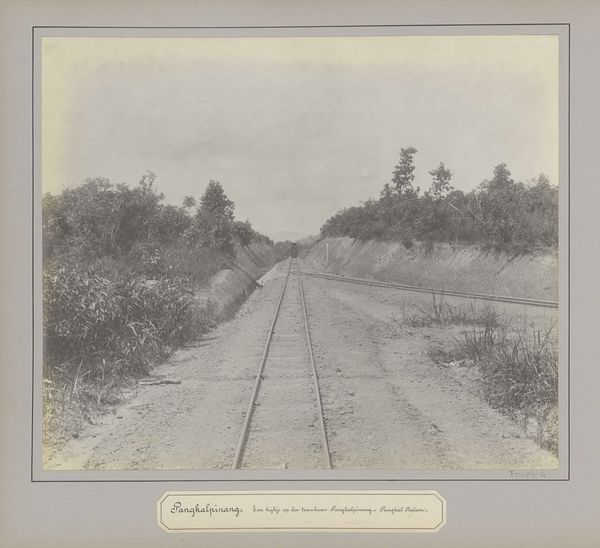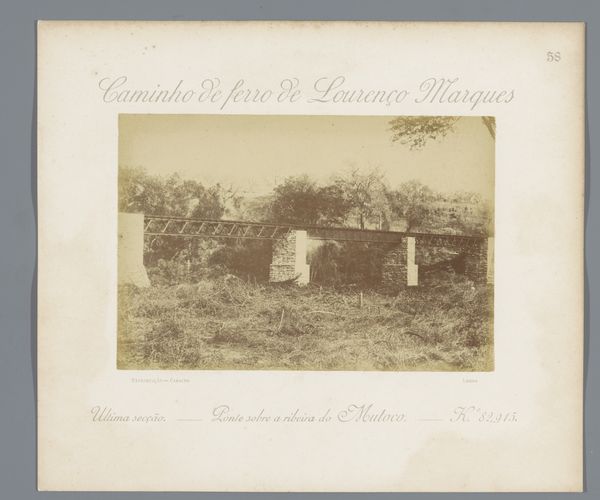
Treinspoor in Mozambique, mogelijk langs de oever van de Rio Incomati c. 1886s
0:00
0:00
print, photography
# print
#
landscape
#
river
#
photography
#
orientalism
Dimensions: height 113 mm, width 167 mm
Copyright: Rijks Museum: Open Domain
Curator: Here we have Manuel Romão Pereira’s "Treinspoor in Mozambique, mogelijk langs de oever van de Rio Incomati," a photograph from approximately 1886. Editor: It has a kind of bleached serenity about it, almost dreamlike. The railway curving into the landscape… it draws you in but there is something barren about it too. Curator: Yes, the "bleached serenity" speaks to a constructed gaze, specifically within the tradition of Orientalism, applied here to the colonial landscape. It invites a Western audience to consume an "exotic" view while obscuring the exploitative conditions of its making. Editor: Precisely. Looking at the exposed track bed, the scale of the rocks used as ballast, one thinks about the labor. Who laid these tracks? Under what conditions? The railway represents progress, but what materials, what human cost made it possible? Curator: It prompts us to consider the political economy embedded within this representation. The construction of railways was fundamentally tied to resource extraction and the subjugation of local populations. The photograph, therefore, isn't just a benign landscape, it’s a document of colonial power. Editor: And even the photographic process itself—the labor involved in creating the print, the materiality of the chemicals, the paper—speaks to a network of production that extends far beyond Mozambique. It's a technology inextricably linked to industrial expansion and the global movement of goods and people. Curator: So, while it appears serene, the image is a potent reminder of how aesthetics can veil underlying social and political realities. How representations are always already constructed to bolster specific narratives, ones we must critically unpack. Editor: Absolutely. The curve of the track invites progress, while we should stop and assess, investigate its wake and the tracks that took us here. It is so easy to look, but we should see! Curator: Indeed, this has illuminated another layer to an important artist whose work requires complex intersectional context. Editor: By observing material and labor beyond the immediately obvious, our view on what it really documents is all the more insightful.
Comments
No comments
Be the first to comment and join the conversation on the ultimate creative platform.
